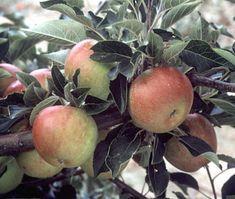
Every morning I stroll through Archbishop’s Park in Lambeth on my way to work, but on this particular day I find myself paying far more attention to the leafy surroundings.
The increased interest is due to the London Orchard Project, a charity restoring community-grown fruit to the capital city, which I recently discovered had planted a variety of new fruit trees in my favourite park.
A warden points out the area and it occurs to me that I’ve passed by on numerous occasions and never realised they were there. This, says the project’s team, is part of the reason London is in danger of losing its fruit heritage. People simply do not know that we have one.
“A third of London is green space,” says Kath Rosen, the project’s chief executive. “While it is unrealistic for London to be truly self-sufficient in fruit, there are pockets of the city that could potentially have large harvests.”
Apart from providing free fruit to local people, the produce could also become a valuable source of income for communities.
The London Orchard Project was launched in 2009 by Carina Millstone and Rowena Ganguli, both involve with sustainable development. It works on two levels, facilitating and managing the planting of new fruit trees and restoring the existing trees and orchards in the city. It has planted some 360 trees so far.
This summer all eyes will be on London with the Olympics and Paralympics. Food and drink will play a major role in the celebrations and there are many brands keen to promote city connections, as well as Fairtrade credentials.
However, how much more London, not to mention environmentally and ethically friendly, can you get than fruit grown in the city’s soil?
“People somehow have this idea that fruit bought in a supermarket, where supplies can be stored for months and lose nutrients, is more healthy than fruit picked from a tree in London,” says Rosen.
The desire to revive the city’s fruit production is rooted in the idea that fresh, healthy produce should be available to all. Volunteers harvest the fruit - this year in Lambeth alone they brought in one tonne of produce - and a sizeable amount is redistributed among community groups in deprived areas.
It’s a model that we are more familiar with in developing countries, where co-operatives grow and share produce. Yet London, for all its veneer of wealth, is home to areas such as Hackney and Tower Hamlets that are among the poorest in the UK.
A new report by the Campaign to Protect Rural England, Mapping Local Food Webs, looks at the potential for locally grown food. It recommends community groups develop and engage in initiatives to create local food networks.
This, says CPRE spokesman Jack Neill-Hall, is not just an issue for the countryside but for urban areas too. “The rate at which we have lost British apple orchards is crazy,” he adds. “We have one of the best climates for growing apples yet we are importing most of the apples we eat.”
Lewis McNell, manager of the London Orchard Project’s lost orchard heritage programme, agrees that even in urban environments, the UK has great fruit-growing conditions. “It’s an absurd situation that some 70 per cent of fruit comes from overseas,” he says. “Growing fruit locally reduces transport, reliance on fuel and the chances that someone has been exploited to produce it.”
Although the charity is aware that it would be a hard push for London to become completely self-sufficient in fruit, its aim is to increase awareness of the potential of growing enough locally that it could supplement store-bought produce.
McNell points out that dwarfing stocks are an excellent way for areas with limited land to grow fruit. As part of its work, the project improves the soil surrounding the trees in order to bring about a fruit of consistent quality. Ideally, the project would like to get to a point where there is enough fruit, especially apples, to create related produce such as jams or drinks.
Rosen says the team is at the early stages of creating a London cider, made from apples grown in the city’s orchards. “There is a lot of potential for London produce,” she says. “We’re really at an embryonic stage with this and there are a lot of questions still to be asked and answered, especially around the ethics.
“For example, we need to work out how such projects would be managed so that a community fairly benefits.”
Rosen says despite the amount of development the city centre has undergone, orchards can still be found in greater London, especially around the south-west suburbs.
The project uses a mixture of aerial photographs and biodiversity surveys to unearth existing orchards; so far they have restored four. In the past three years they have planted 40 new orchards, containing between eight to 10 trees.
With limited funds and manpower, the charity relies upon an army of volunteers to help them restore, plant and harvest.
However, this coming winter they will rescue six more of London’s lost orchards and create new ones so that the city can benefit from fruit grown in its own backyard. -